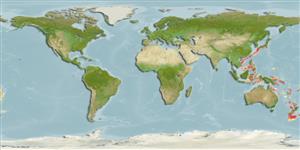| Native range | All suitable habitat | Point map | Year 2100 |

|
| This map was computer-generated and has not yet been reviewed. |
| Hydrolagus deani AquaMaps Data sources: GBIF OBIS |
Nutzung durch Menschen
Fischereien: nicht kommerziell
Phylogenetic diversity index
(Ref. 82805)
PD50 = 0.5000 many relatives (e.g. carps) 0.5 - 2.0 few relatives (e.g. lungfishes)
Trophic Level
(Ref. 69278)
3.7 ±0.6 se; Based on size and trophs of closest relatives
Widerstandsfähigkeit
(Ref. 69278)
niedrig, Verdopplung der Population dauert 4,5 - 14 Jahre. (Assuming Fec <100)